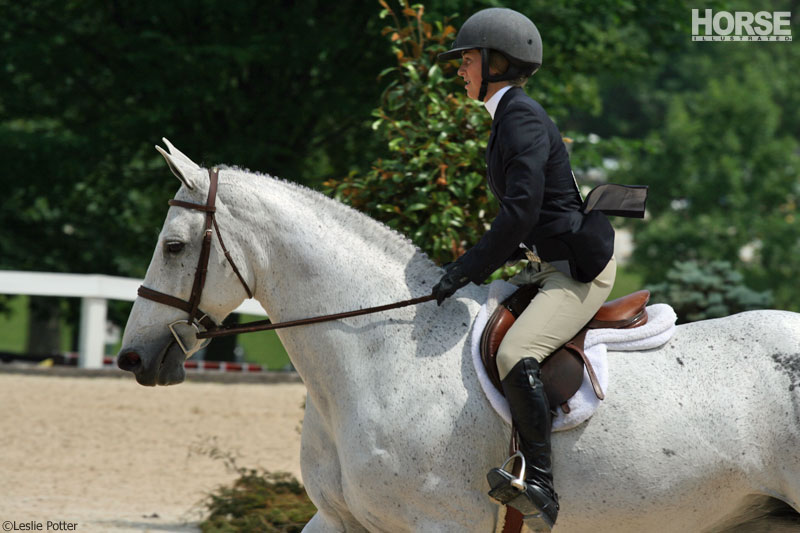
Keep in mind that not all boots need to be broken in. Dressage boots, for example, are not supposed to soften at all; they’re compared to stove pipes for exactly that reason! If they break in at all, it will be minimally at the ankle. Field boots, however can be expected to drop 1 to 2 inches once they’re completely broken in.
There are some tricks you can use to help break in your boots more quickly. The include:
- Before ever riding in your boots, wear them around the house for a few hours each day (or as long as you can stand) to begin the break-in process.
- Stand on the edge of the stairs, facing up, and drop your heels over the edge of a stair tread. This will mimic the heels-down feel of riding and begin breaking in the boots at the ankle.
- Apply copious amounts of leather conditions to the ankle area where the boot needs to drop. You can also apply it to the top of the boot where it sits behind your knee, but be careful not to stain your breeches.
- Place boot trees in your boots whenever you are not wearing them to help retain their shape and stretch them just a bit.
- Keep your saddle and girth well oiled, if they’re leather. Once you ride in your boots, the motion of your leg will work the oil from your tack into the parts of the boot that come in contact with it, suppling it as you ride.
- Oil the inside (yes, inside) of your boots before putting them on (word of caution: wear old socks!). This will help break in the leather from the inside, as well.
- Apply a boot stretch spray to the ankles of your boots
- Ride your bike in your boots! While you might look funny, riding a bike mimics the motion you make while riding your horse, without the fear of getting bucked off while you’re leg isn’t tight.
- Consider bringing your boots to a cobbler to have them professionally stretched if you still can’t feel your toes after trying these tips.
- If you’re brave, fill your boots with warm water while you wear them, or dunk them in a tub filled with warm water (don’t soak – just dunk). Then wear the boots until they’re dry (this is not the most comfortable endeavor). Sit in a chair for a bit so the ankles and knees are at right angles to one another, resembling how you ride.
If you do get blisters from your boots during the breaking-in process, there are a few products you can try besides the standard adhesive bandages. These include moleskin and heel risers, both of which can be easily found at pharmacy stores. Wrapping your legs in elastic bandage such as Vetrap also works and can cover a wider area. If your blisters are primarily on your ankles, try wearing an ankle sock under your tall boot sock. The added padding might be just what you need to tide you over until your boots fully break in.
Liked this article? Here’s more on selecting and caring for riding boots.
The Finer Points of Perfect Boot Fit
Question of the Week: Breaking in Riding Boots







good advice
Sounds awfully painful.
Does anyone know if these tips actually work?
Well made boots that fit well are the best money you will spend. I have bought bargain sale boots that were never comfortable even with those tips for breakin used. I now buy a brand that fits my foot well and they need very little breakin. I find Ariat fits my foot better than Mountain Horse, Dublin etc. If it isn’t comfortable at the beginning I no longer buy them.
is painful but worth it